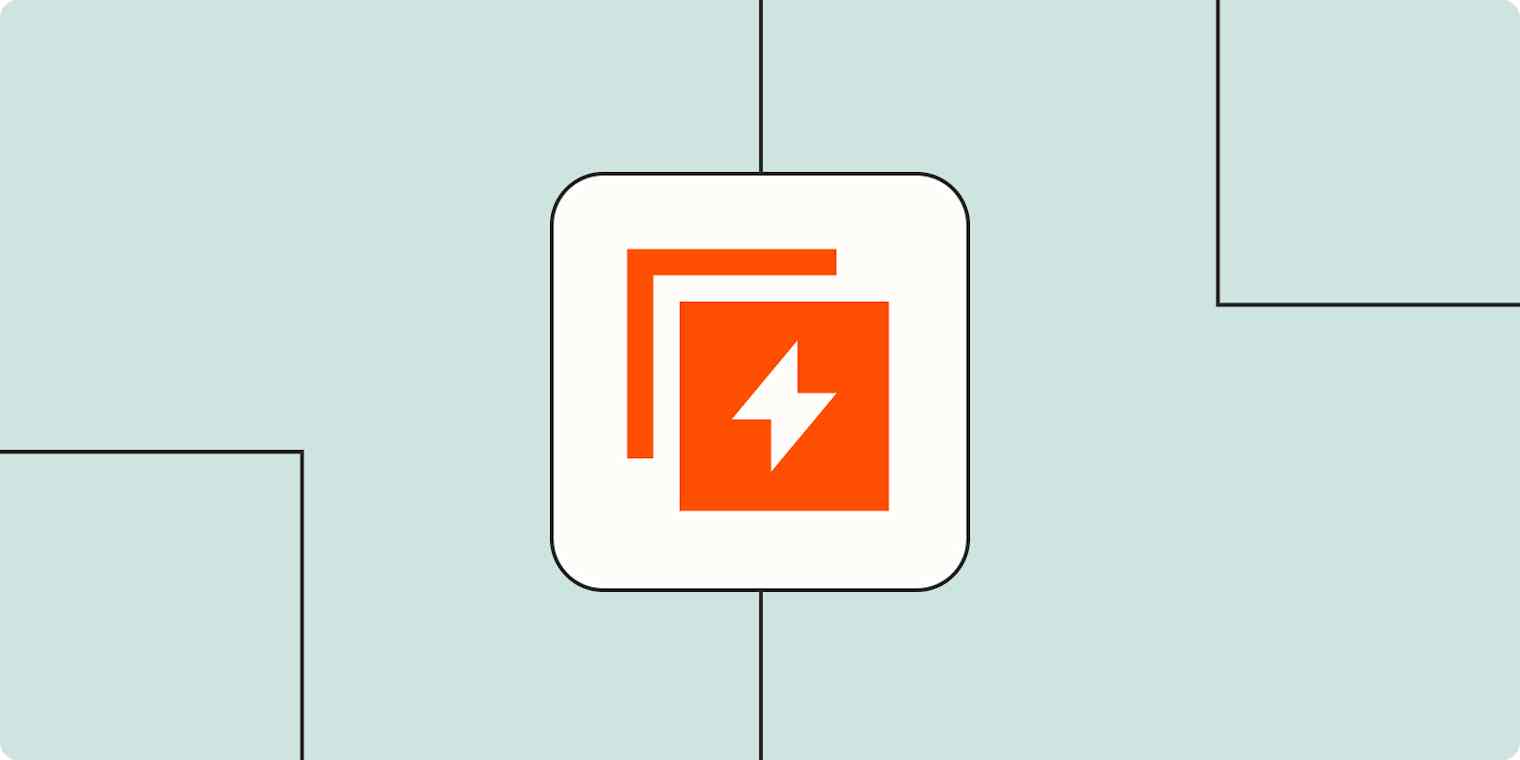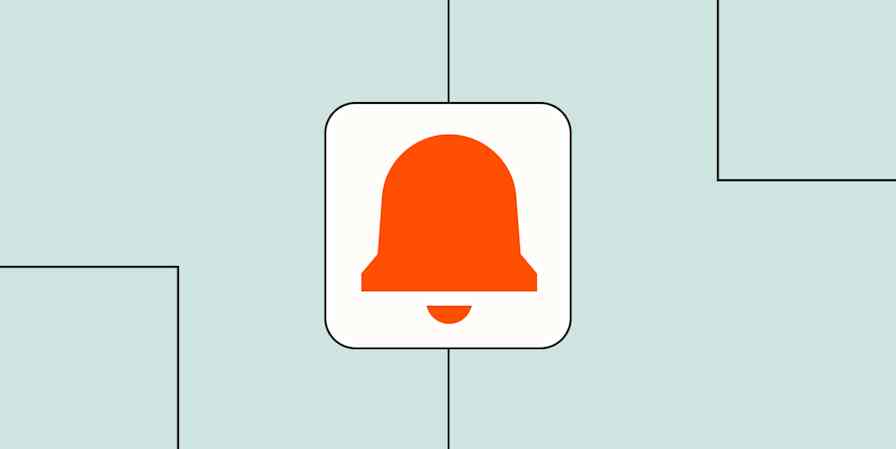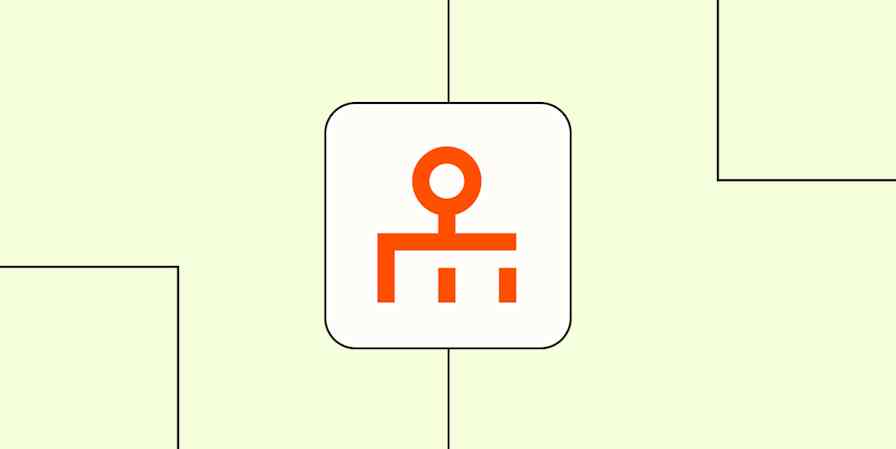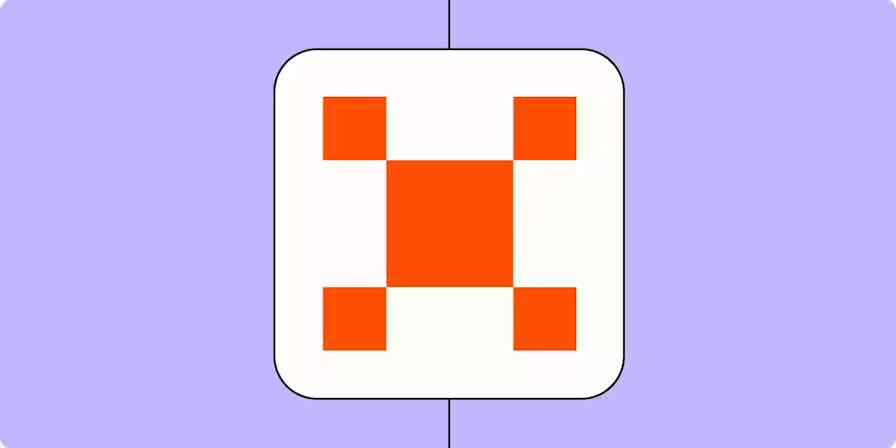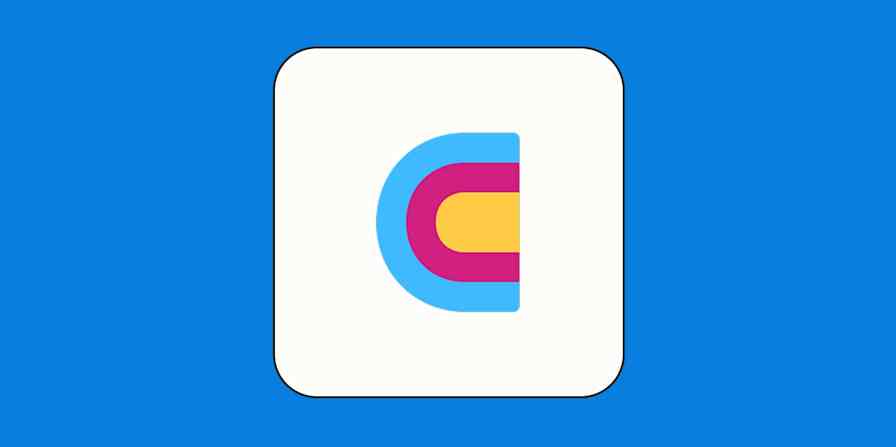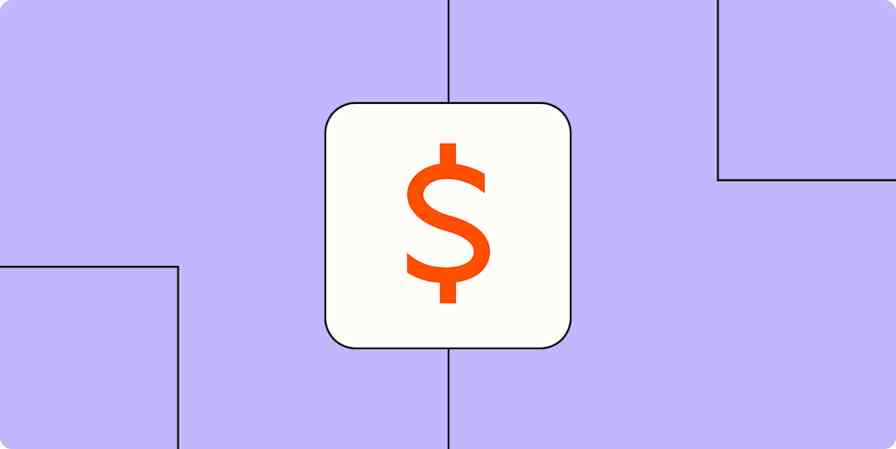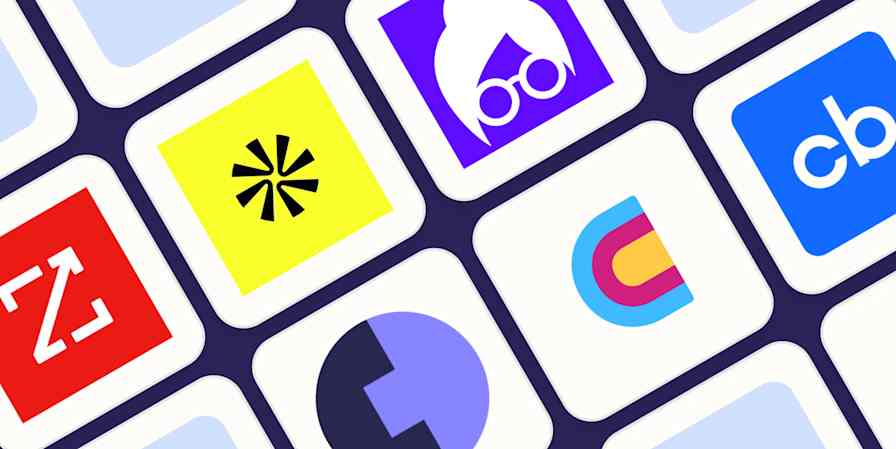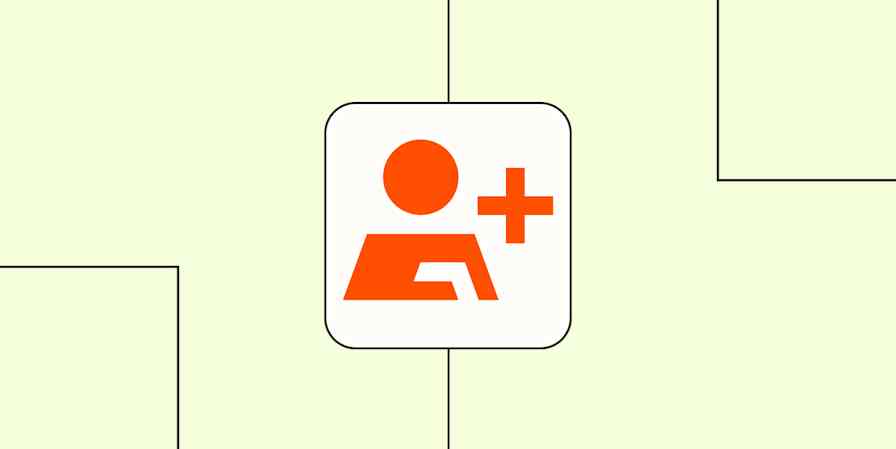You want to put your best foot forward to nurture leads, but using your human brain and time for every task isn't scalable.
Marketing automation is a fuzzy term for the solution to that problem, but it means different things to different marketers. Depending on your role and industry, you might use marketing automation to leverage the information you have about prospects to deliver personalized marketing at scale, or you might use it to streamline tedious internal processes so you have more time to focus on big swings.
Here, we'll look at a whole range of marketing automation examples: everything from simple automations within a single marketing platform all the way to full-on AI orchestration with Zapier, connecting your entire marketing tech stack.
Table of contents:
What is marketing automation?
Marketing automation is about using software to handle repetitive marketing tasks so teams can focus on the stuff that requires a human brain. Instead of manually sending every follow-up email, tagging each lead, or logging campaign data, automation tools take care of those processes behind the scenes. It saves time, ensures consistency, and allows marketers to scale efforts without sacrificing personalization.
Marketing automation typically falls into two broad categories:
Customer-facing automation. This includes things like triggered email sequences, personalized website experiences, social media scheduling, and lead nurturing workflows. For example, when someone downloads an eBook, they might automatically receive a series of emails tailored to their interests. The goal here is to deliver the right message to the right person at the right time with no manual intervention.
Internal process automation. Just as powerful (though less visible to customers) are automations that help marketing teams work more efficiently. These could include syncing data across CRMs and analytics platforms, notifying sales teams when a lead hits a certain threshold, or auto-generating reports.
The specifics will look different depending on your company size, industry, and tech stack—but the underlying goal of marketing automation is to make marketing more efficient and effective.
Components of marketing automations
To set up marketing automations, you need to understand their two components: a trigger and an action.
A trigger is an event or condition that lets the automation know it's time to start. For example, when a lead:
Downloads a piece of gated content
Adds an item to their cart but doesn't check out
Signs up for a free trial
Requests a product demo or meeting time
Purchases something from your website
Opens your app
An action is the event that the trigger sets in motion. For example:
Sending an email
Adding a lead to a new drip sequence
Sending an SMS
Updating your CRM
Sending a push notification
Creating an in-app message
Adding the lead to a direct mail list
Notifying the marketing or sales team
Your team can also trigger actions if you have internal marketing automations set up.
For example, internal triggers could fire when someone on your team:
Updates a lead's status in the CRM
Marks a project as complete in the project management tool
Submits a feedback form or internal survey
Schedules a new meeting or event in the calendar
Uploads an assignment to a shared folder or drive
This could lead to actions like:
Automatically notifying the sales rep assigned to a specific lead
Sending a project summary email to all stakeholders
Creating a follow-up task for a manager to review employee feedback
Adding meeting details to a shared team calendar or agenda
Tagging relevant stakeholders and updating file permissions
12 marketing automation examples
Any seasoned marketer could likely rattle off dozens of marketing automations they have set up, so heading to a Slack community and learning from other people in your industry and role is definitely your best bet for inspiration.
But as an introduction, I'll share some marketing automation examples you can work from. Some are customer-facing classics (like welcome emails that actually make you excited about a brand), while others are marketing automation workflow examples that keep your operations running smoothly.
1. Internal marketing team notifications
Trigger: A marketing campaign reaches a new milestone
Action: The next marketing team member gets a notification
While most apps have basic internal notifications built in, the real magic happens when you coordinate across all the apps in your tech stack.
Zapier connects to 8,000+ apps, so it can keep your internal marketing workflows running without constant manual oversight. For example, instead of marketing managers chasing updates, Zapier can automatically track campaign milestones across project management tools, alert stakeholders to changes, and create follow-up tasks. And with built-in AI tools, Zapier can also generate summaries or reports and deliver them automatically to stakeholders at a set cadence.
This kind of AI orchestration gives teams more visibility and agility, reducing the time lost to status checks and bottlenecks. Here's a template to work from.
Submit project updates in a form and let AI Agents create intelligent status update emails.
2. Automated lead capture data entry
Trigger: A lead fills out a form, makes a purchase, or interacts with your website
Action: Customer data automatically syncs across all your marketing tools
Of course I like seeing new leads filter in after a successful event or campaign. But manually entering and scoring the data of 200+ unique prospects makes me feel… less enthused. What should be a victory lap turns into three hours of copy-pasting email addresses and hoping I don't accidentally put someone named "Jennifer" into a sequence for "Jonathan."
Zapier can pull lead data from every source and then send it wherever you want it to go, whether that's your CRM, email marketing platform, or even just a spreadsheet. It can even add each lead to the right email sequence, tag them by source, and create a follow-up task for your sales team.
Because everything syncs automatically, your data stays consistent across platforms. Get started with this marketing automation template.
3. AI chatbots for lead qualification
Trigger: A website visitor starts a conversation with your chatbot
Action: The AI chatbot qualifies the lead and routes them to the appropriate next step
Not every website visitor is ready to talk to a sales rep, but many are likely asking the same questions. Qualifying and capturing leads used to be a hands-on task. With Zapier Chatbots, you can automate those early conversations and qualify leads in real time. No manual screening required.
To set up your custom chatbot, give it clear instructions and connect it to your knowledge sources. This helps it answer common questions, collect contact details, and ask qualifying questions.
Based on the visitor’s responses, the chatbot automatically triggers different workflows, like scheduling a demo for qualified leads, sending follow-up content to nurture others, and enriching lead data and logging the interaction data in your CRM.
Use your business content to resolve support and lead questions with a customized chatbot.
4. Sentiment analysis for social media monitoring
Trigger: Your brand is mentioned on social media or in online reviews
Action: AI analyzes the sentiment and alerts your team to the feedback
Social media is both my best friend and worst nightmare. One minute I'm celebrating a successful campaign, and the next I'm frantically responding to an angry customer who's tagging our account in increasingly creative ways across three different platforms.
Monitoring every mention of a brand across multiple platforms isn't realistic for human teams (and honestly, it's not great for anyone's mental health). You can use Zapier Agents to keep tabs on customer sentiment across multiple platforms, automatically analyzing mentions of your brand and routing insights to the right team members.
This automation uses natural language processing (NLP) to scan social media mentions, reviews, and comments for emotional tone. When it detects negative sentiment about your brand, it can automatically create a task for your social media team, send an alert to your customer service department, or even escalate urgent issues to management.
The flip side is just as valuable: positive sentiment can trigger automations, too. Glowing reviews might automatically get shared to your marketing team's Slack channel, or particularly enthusiastic customers could get added to a list for potential case study outreach.
5. A/B test analysis and implementation
Trigger: One of your A/B tests reaches statistical significance
Action: AI sends test completion alerts and creates follow-up tasks
A/B testing delivers valuable insights, but manually monitoring multiple tests and coordinating follow-up actions can create campaign bottlenecks.
Most, if not all, email marketing platforms can automatically pause tests when they reach statistical significance, but the real time-saver comes from automating what happens next. Instead of manually checking test status and coordinating with your team, you can set up automated workflows that spring into action the moment a test concludes.
This might look like automatically sending campaign report details to relevant team members via Slack, creating a task in your project management tool to implement the winning variation, or reminding you to log results for future reference. This helps reduce manual monitoring and ensures no completed test results slip through the cracks.
6. Inbound message routing
Trigger: A customer message arrives via email, social media, or contact form
Action: AI categorizes the message and routes it to the appropriate team
Customer messages can pour in from every direction (emails, social media mentions, contact forms, chat widgets), and someone has to play traffic cop, figuring out which team should handle what. This is a time-consuming bottleneck that delays responses and risks important communications falling through the cracks.
Instead of having a human manually sort through every inquiry to determine if it's a sales lead, support ticket, or partnership request, inbound message routing uses AI to instantly categorize incoming messages and send them directly to the right team.
Beyond adding the right labels for each conversation, the automation can also assess message urgency, prioritize responses, and maintain visibility across teams, making sure every inquiry is handled quickly and nothing slips through the cracks.
Here's a template you can start with.
Route new emails, form submissions, and social messages from multiple channels to the right teams with intelligent categorization and routing.
7. Campaign performance reporting
Trigger: Reporting time arrives (like the first Monday of the month) or ad spend reaches a certain threshold
Action: AI compiles data from multiple platforms and generates a performance report
Without visibility into campaign performance, it's difficult to understand what's resonating with leads and where engagement is falling flat. These insights inform the strategies and touchpoints that keep prospects moving through the funnel.
Still, digging through different reporting platforms can eat up hours every week. Zapier helps remove this headache by allowing you to automatically pull performance data from multiple sources into a centralized table.
For example, you can automatically pull click-through and conversion data from the reporting platform, compile it into a table, and generate a report summarizing campaign performance. These reports then appear in your inbox exactly when you need them, giving your team up-to-date visibility across campaigns and making it easier to optimize strategy and touchpoints throughout the funnel.
Kick off the process with this pre-built template.
Consolidate LinkedIn and Facebook Ads and run weekly reports using an AI Agent.
8. Lead scoring
Trigger: A new lead is added to your database
Action: The lead is assigned a score based on their degree of interest
Instead of sorting leads one by one, you can use marketing automation platforms to automatically assign a score based on how someone interacts with your brand or how closely they match your ideal customer profile. Most CRMs and a lot of email marketing platforms come with built-in lead scoring—you just need to tell it what matters to you so it can score leads accurately.
If your software doesn't have the lead scoring feature you need, you can use this Zapier template, which takes a database of leads and returns a lead score along with enriched data such as company information, industry, and job title.
This ensures every lead is scored and enriched consistently, providing your team with actionable insights immediately. Here's the template to get you started.
9. Welcoming customers
Trigger: Someone signs up for your email newsletter
Action: Send welcome email
Welcome emails are the perfectly worn-in pair of jeans of automations: everyone can use one. The idea is that you send an email as soon as you get a lead's contact information (e.g., from a lead magnet or newsletter subscription). All you have to do is connect your email platform to your lead capture source, so the moment a new contact enters your database, they receive a personalized welcome message. If your email marketing tool doesn't have a built-in integration with your lead capture source, Zapier can connect the two.
This email can introduce your brand, highlight next steps, or simply say thank you. For example, after signing up for the New York Times newsletter, I received a letter from the editor with links to curated articles, making the purpose and value of the subscription immediately clear.
Since new subscribers have already shown interest in your topic, product, or service, a timely welcome email can capitalize on that momentum by directing them toward resources, content, or offers that encourage engagement.

10. Customer segmentation
Trigger: Lead shows interest in a product or service (e.g., by clicking onto a product page or taking a quiz)
Action: Send discount to incentivize a first-time purchase
Using automated pre- and post-purchase messages to learn about leads allows you to stow away information and use it later. The key is identifying customer segments or preferences that influence purchasing decisions, then using your email marketing tools' tagging capabilities to automatically log a person's choices.
For example, after I signed up for Manic Panic's newsletter and went a week without purchasing, the company used an email to segment me. The email showed real customers with different base hair colors, along with a CTA to explore customized products. Depending on which CTA a user clicks, they'll automatically be assigned to a segment based on their current hair color.
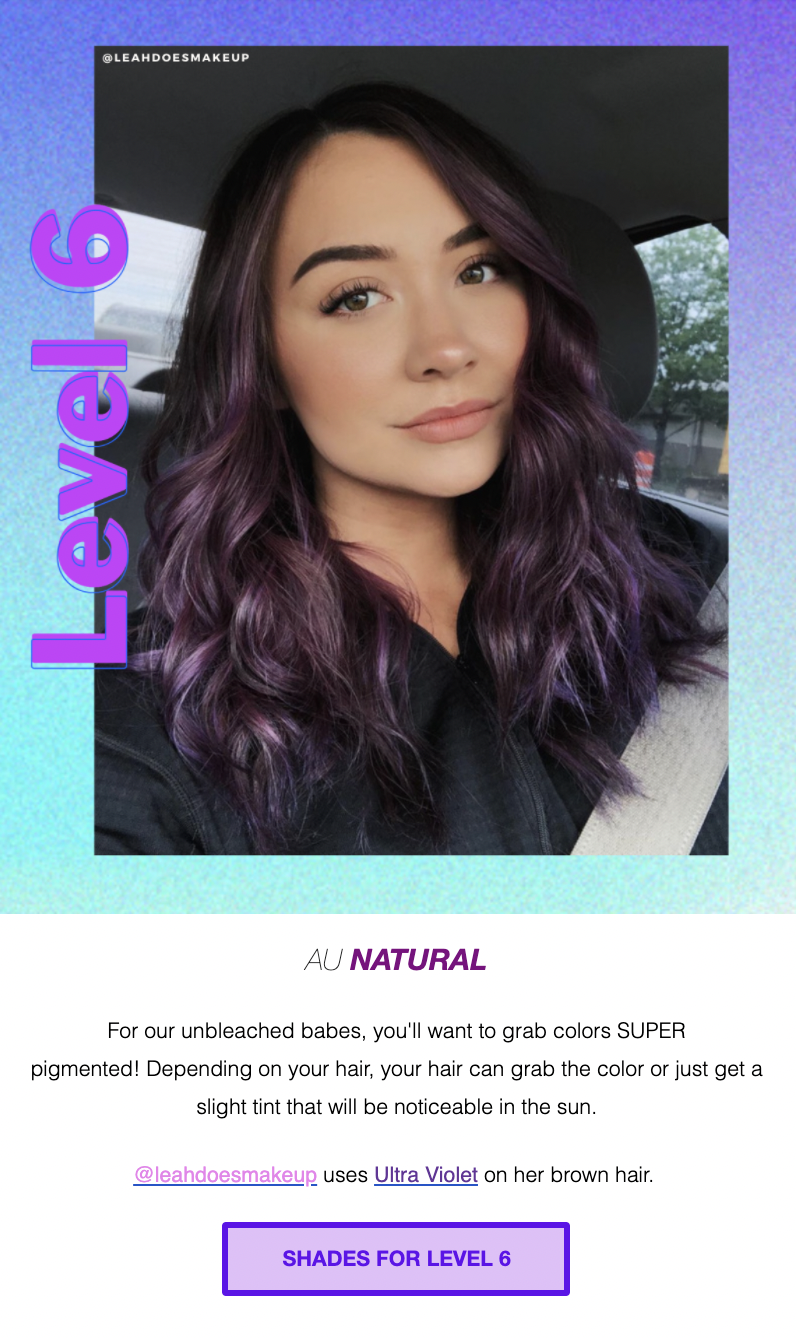
Using a lead nurture email to lay out a buffet of options with triggered links has two benefits. First, you get to show off products to potential customers. Second, you learn what they're interested in—that's information you can use to send targeted messages in the future.
11. Special offers and cart recovery notifications
Trigger: Lead shows interest in a product, abandons their cart, or reaches a special milestone (like a birthday)
Action: Send a targeted message or offering to incentivize a purchase
The best email campaigns reach customers at just the right moment—whether they're browsing your products, leaving items in their cart, or hitting a milestone worth celebrating. Just because someone doesn't take action immediately doesn't mean they never will. That's why it's worthwhile to set up automated messages that respond to customer behavior and send the right message when they're most likely to engage.
This could apply to sending discounts on a customer’s birthday or a welcome offer to help get new leads through the sales funnel. For those who were close to a sale but left items in their cart, abandoned cart message automations can help get them across the finish line.
Goldbelly's approach to cart recovery is one example of this strategy. They send a text message with a direct link back to the abandoned cart, making it as easy as possible to complete the purchase. Referencing the specific items left behind and adding social proof or a small discount can also sweeten the deal.
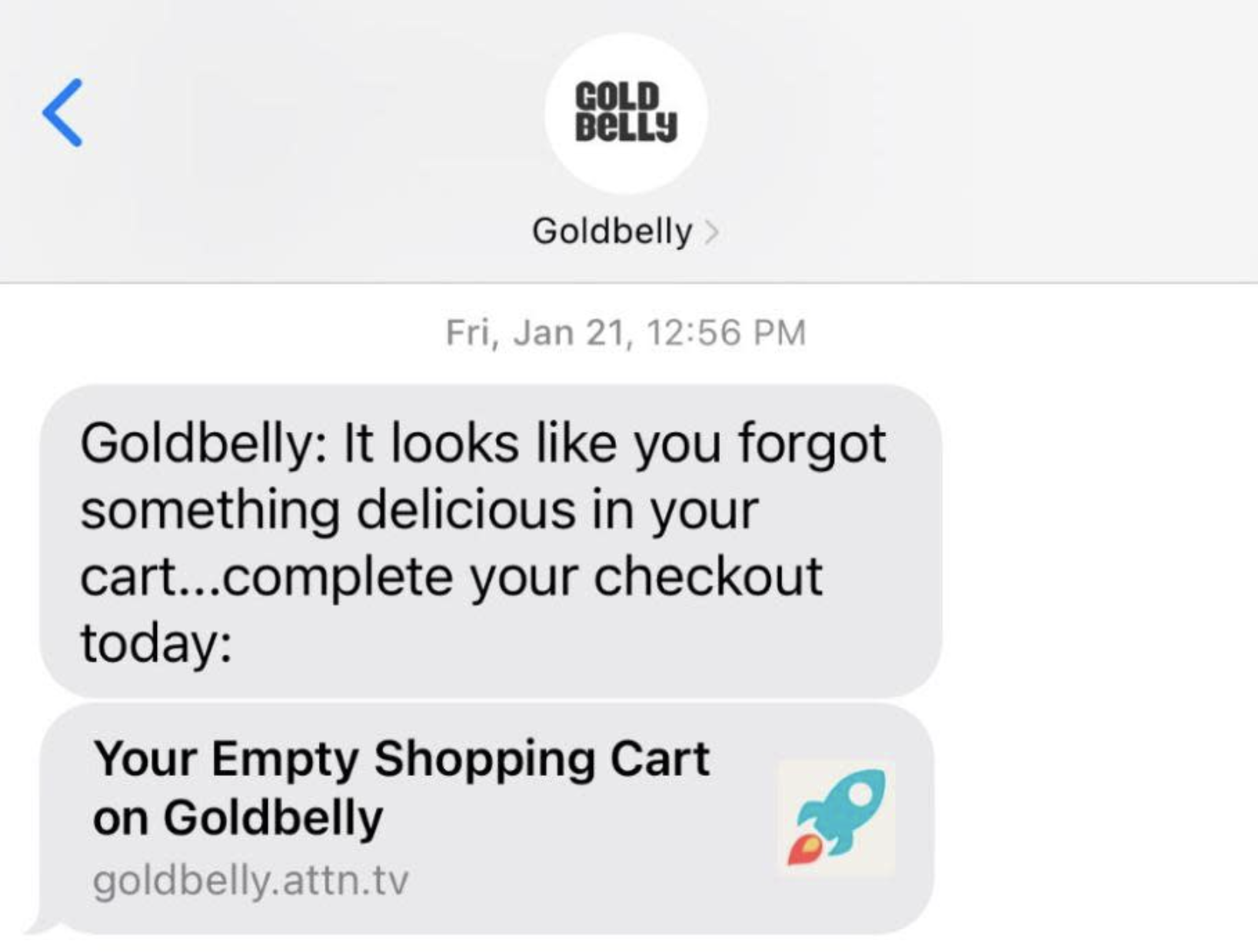
Most eCommerce platforms support abandoned cart automations, but you can also use Zapier to enhance your email campaigns by connecting your eCommerce platform to your email tools.
For example, you can set up Zaps that automatically send personalized follow-up emails when someone abandons their cart or makes a purchase, log customer interactions to spreadsheets for better tracking, or trigger different email sequences based on customer behavior across multiple platforms.
12. In-app messaging
Trigger: Someone opens your company's app
Action: The app pushes an ad or offer to that user's device
You can set up a promotional offer that greets users right when they open the app. This one coincides with the release of Dunkin's fall drink menu, which is already a major draw for customers. The discounted price is just icing on the cake (whipped cream on the coffee?).

Because this message appears automatically when someone opens the app, it targets people who are already interested in buying coffee at Dunkin'. But you could also use push notifications to target users who don't regularly check the app.
Automate all your marketing apps
Many marketing tools can handle some level of automation or dripped content natively. Depending on the type of automation, you can set it up in your CRM, your email marketing tool, your SMS marketing app, or your eCommerce site. But if you want to step up your lead nurturing, Zapier allows you to connect all your marketing apps, so you can deliver personalized experiences on any platform—and turn those leads into customers.
Zapier's AI orchestration platform lets you layer AI directly into your marketing workflows across 8,000+ apps. Instead of managing separate automations across different platforms (where your email tool doesn't talk to your CRM, and your eCommerce data is separated from your customer support system), Zapier creates a centralized nervous system for your entire marketing operation.
Learn more about how Zapier can streamline your marketing automation.
Zapier is the most connected AI orchestration platform—integrating with thousands of apps from partners like Google, Salesforce, and Microsoft. Use forms, data tables, and logic to build secure, automated, AI-powered systems for your business-critical workflows across your organization's technology stack. Learn more.
Related reading:
This article was originally published in August 2019 by Emily Esposito and has also had contributions from Steph Knapp and Sydney Parra. The most recent update was in August 2025.
